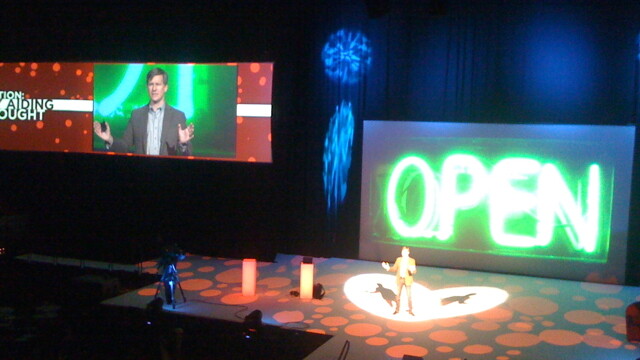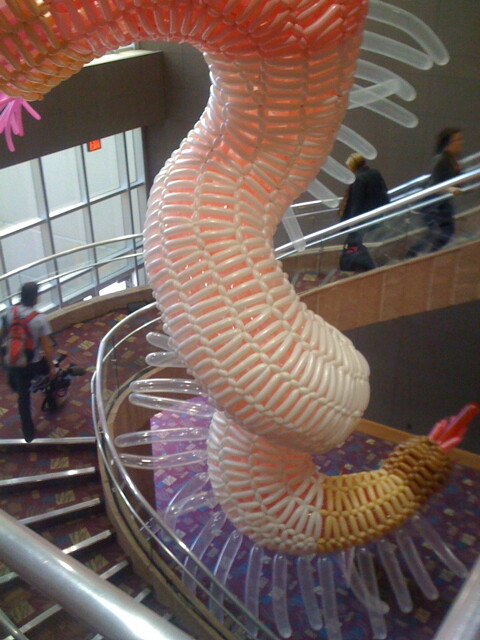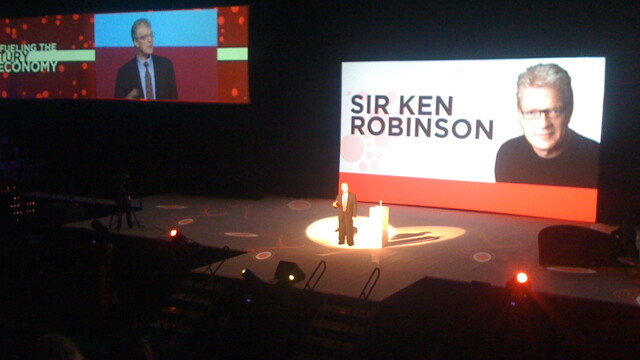When Creativity Attacks
future success around the world will be built on imaginative minds
Nick Meyer, photos by Nick Meyer |

Creativity has always been a nebulous sort of thing. When an intangible concept manifests itself in so many different ways it becomes a little hard to pin down exactly what it means. At first pass, we might assume creativity is something only practiced by artists, writers, musicians, dancers and the like. Or worse, we relegate it to something as really only for kids. Of course on further consideration we realize none of this is true. In the modern economy, creativity touches hundreds of industries and is as in-demand as skills in math and science. But on a more personal level, creativity can be exemplified in everything from how you decorate your house with Christmas lights to how you parent your kids.
With such a far-reaching scope and definition, I was intrigued (and a bit skeptical) when I first heard of an international convention focused on creativity. But just a few months later, that’s exactly where I found myself. Through my position on the Wisconsin Arts Board, I was invited to join a small delegation of interesting CEOs, university leaders, and state administrators – about 15 of us in all – to represent Wisconsin on a trip to the seventh annual Creativity World Forum in mid-November. This year held in Oklahoma City (the first time in the United States, in fact), the forum convened more than 2,500 people from around the world to hear presentations, experience performances, and engage in discussions about the critical role creativity will play in the world going forward – not only in the arts, but in education, science, and economic development.
While IQ scores continue to rise an average of 10 points with each passing generation, researchers are finding the opposite is true of creativity scores. They’re going down.
Since the event was held in Oklahoma this year, their state’s creative and cultural exports took center stage often throughout the event in the form of speakers and performers (much like a TED conference if you’re familiar with those). Native American heritage, as big a part of Oklahoma as oil, played a strong role in extremely theatrical opening and closing ceremonies. With artists ranging from The Flaming Lips to Wanda Jackson as Oklahoman exports, organizers packed the days and nights full of performances by local originals. Despite the impressive guest list and constant hustle and bustle, everyone and everything was very approachable. I was able to meet and chat with the internationally renowned creativity and education expert Sir Ken Robinson (somewhat of a hero of mine, watch this and this), the president of HARPO (Oprah’s production company), and even the members of the Tulsa-based band Hanson (yeah, “MmmBop” Hanson – turns out they’re still around and writing some really good songs). Also on hand were the likes of acclaimed author Daniel Pink (watch this), NY Times tech guru David Pogue (watch this), and energy activist T. Boone Pickens. And that’s just to namedrop a few.
But weird “celebrity” encounters aside, this gathering served as sort of rally cry to increase our collective awareness of exactly what it’s going to take to achieve any number of goals – from strengthening the economy to fixing education to decreasing our dependence on oil. We’re going to have to get creative. And that means we need to get better at teaching children how to be creative adults, get better at enabling our workforce to be creative, and get better at developing our capacity to solve not only the problems we have now, but to identify and solve ones that don’t even yet exist.
With all the advances in technology, science, and medicine in recent decades, one might assume we’re getting more creative as a society. Turns out that’s not really true. At least not in America. While IQ scores continue to rise an average of 10 points with each passing generation, researchers are finding the opposite is true of creativity scores. They’re going down. Since 1990 the trend has become clear, and is most evident among kids kindergarten through sixth grade. Point fingers wherever you’d like (popular culprits range from TV and video games to standardized testing and lack of parental encouragement), but others around the world, like China and many European countries, have already taken significant steps to radically change how they address creativity in youth by launching programs focused on idea generation, problem-based learning, and creativity training for teachers.

The Creativity World Forum drew more than
2,500 people from around the world.
(More images.)
That’s not to say nothing is happening stateside. In Wisconsin, and even right here in the Chippewa Valley, many organizations are working to address these issues. One organization, the Wisconsin Arts Board, is working hard to secure adequate funding for programs in arts education and economic development, as well as lend support to creative industries and non-profits. Locally, a group of interested teachers, parents and others are working with the Eau Claire Area School District to open ENGAGE, a public charter school for creative arts and culture (full disclosure: I was recently invited to join their governance board). Likely located somewhere in downtown Eau Claire, ENGAGE will be open in the fall of 2011 with approximately 44 students in grades six through nine, using a curriculum focused on project-based learning.
You can’t open a newspaper without hearing about the need for innovative solutions to a variety of problems. Unfortunately you can’t get a truly innovative advancement in any field without functional creativity behind it, and you can’t get that without building imaginations. It takes practice in broad divergent thinking and intense convergent thinking. No amount of drilling facts and figures into kids’ heads will result in adults capable of innovating a cure for cancer or of making that next big technological breakthrough. That’s an old model based on old paradigms. If we want to push for innovation, we need to first push for imagination.

At the leading edge of much of this thought is the aforementioned Sir Ken Robinson. A brilliant author and enaging speaker, videos of his TED Talks and other public appearances have been viewed millions of times online. I’d like to leave you with a few lines from his most recent book, The Element: “Our best hope for the future is to develop a new paradigm of human capacity to meet a new era of human existence. We need to evolve a new appreciation of the importance of nurturing human talent along with an understanding of how human talent expresses itself differently in every individual. We need to create environments – in our schools, in our workplaces, and in our public offices – where every person is inspired to grow creatively. ... Because as the world evolves, the very future of our communities and institutions will depend on it.”
RELATED LINKS
Creativity World Forum: http://stateofcreativity.com/events/cwf/
Creative Oklahoma: http://stateofcreativity.com/Ken Robinsion: http://sirkenrobinson.com/
Dan Pink: http://www.danpink.com/
David Pogue: http://www.davidpogue.com/






















